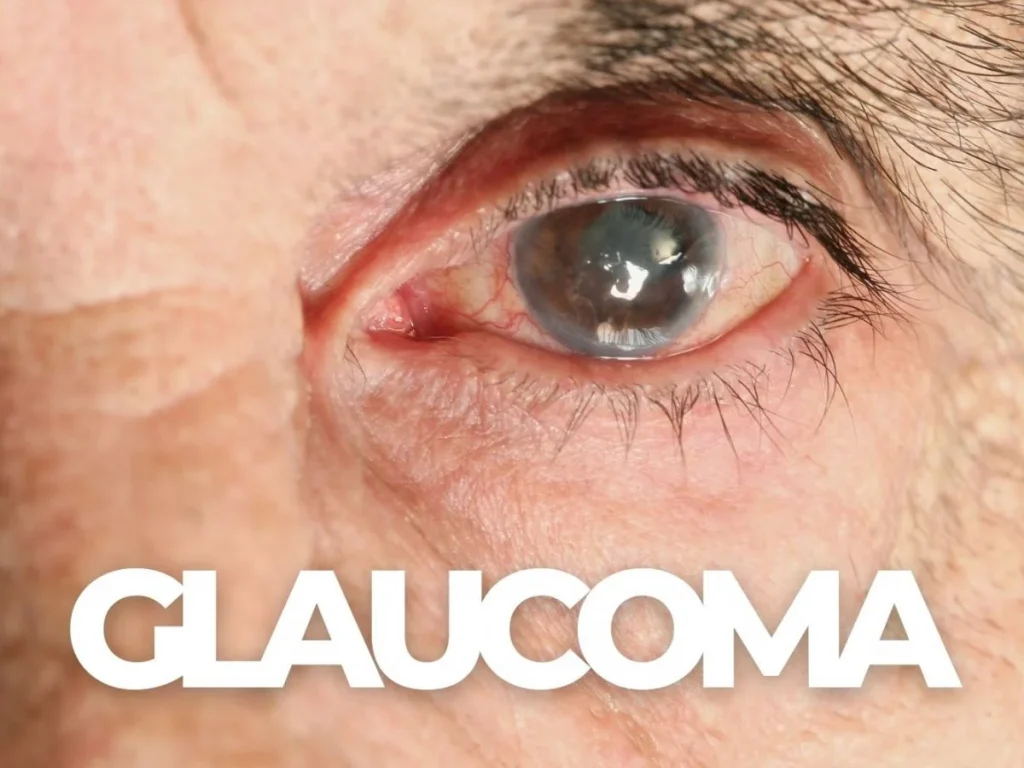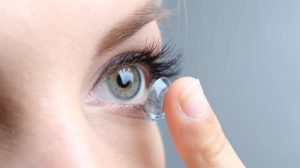Glaucoma is the leading cause of irreversible blindness in adults aged 40 and above. Keep reading to discover the basics of glaucoma and its first signs.
What Is Glaucoma?
Glaucoma is a progressive eye disease that damages the optic nerve inside the eye caused by increased internal eye pressure.

When left untreated, it will cause permanent vision loss and lead to blindness. The problem with glaucoma is, it can go undetected for years with few or no warning signs, but in the mean time causes irreversible damage to the optic nerve, the link between your eye and brain.
It is estimated that approximately 64 million people have glaucoma worldwide. While anyone can develop glaucoma due to various external factors, the condition is the most prevalent among adults over the age of 40.
Glaucoma tends to run in families. If you have glaucoma in your family, you should do a glaucoma screening yearly.
Causes
Your eyes are filled with aqueous humor. This transparent, water-like substance provides nutrition to the eye and maintains the pressurized shape of the eye. It’s continuously produced and drained from the eye. Patients with glaucoma don’t drain excess fluid properly and pressure builds up inside the eye, causing damage to the optic nerve.
Usually, this is a slow, insidious process (open-angle glaucoma) but in some cases, an acute rise in eye pressure due to closure of the drainage, causes acute or closed-angle glaucoma. This is a medical emergency.
Other possible causes of glaucoma include blunt or chemical trauma, severe eye infections, blood vessel blockage inside the eye, and inflammatory conditions. Despite being unlikely, eye surgery may give rise to glaucoma.
Risk Factors
Glaucoma usually affects adults over the age of 40, but also young adults, children and even infants can have glaucoma. Risk factors include:
- Being age 40 and over
- Having family with a history of glaucoma
- Being of Hispanic, Asian, or Black descent
- Having diabetes
- Having Sickle Cell Anemia
- Having hypertension (high blood pressure)
- Having previous eye injury or surgery
- Having thinner corneas
- Taking certain corticosteroid medication
- Having very dense cataract
- Having elevated eye pressure
Early Signs & Symptoms of Glaucoma
Most people with (open-angle) glaucoma don’t have any symptoms. If symptoms appear, it’s usually late in the disease and the main sign is loss of peripheral vision. Because this happens so slowly over time, people are usually unaware of it.
Sometimes people can develop acute or closed-angle glaucoma. In this case, symptoms and damage develop quickly. This is an eye care emergency.
You should seek help immediately if you develop the following symptoms:
- Intense eye pain or headache
- Eye redness
- Halos, rings, or rainbows around lights
- Vision Loss
- Nausea and vomiting
- Eye that looks hazy
Diagnosis & Treatment

How to Diagnose Glaucoma
It generally doesn’t take long to check for glaucoma. The examination is quick and includes a vision check, tonometry (measurement of eye pressure) and after dilation of your pupils with eyedrops, a visual check of your optic nerve. When glaucoma is suspected, special imaging to document the state of the optic nerve and a visual field test to check for peripheral vision loss will also be performed.
How to Treat Glaucoma
Glaucoma (open-angle) is usually treated with medication but sometimes requires surgery.
Some of the standard treatments for glaucoma include:
- Eye drops — to lower eye pressure.
- Oral medications — beta-blocker or carbonic anhydrase inhibitors slow fluid production and improve drainage.
- Surgery — trabeculectomy helps drain fluid through a newly created channel. Other procedures include iridotomy and cyclophotocoagulation.
- Cataract surgery
Acute (closed-angle) glaucoma is a medical emergency and is treated with a laser procedure.
Glaucoma is a lifelong disease and requires continuous follow-up.
If you’re over 40, have glaucoma in your family or experience symptoms of glaucoma, contact EEC today for an eye exam!
Every patient deserves top-quality eye care from us. European Eye Center focuses on providing Western-standard services and determining appropriate treatment plans to help patients restore their vision in a feel-like-home atmosphere.
We are happy to help if you have questions about the first signs of glaucoma or any other vision conditions. Don’t hesitate to connect with us at info@europeaneyecenter.com.
Contact us today to schedule an eye care service!







